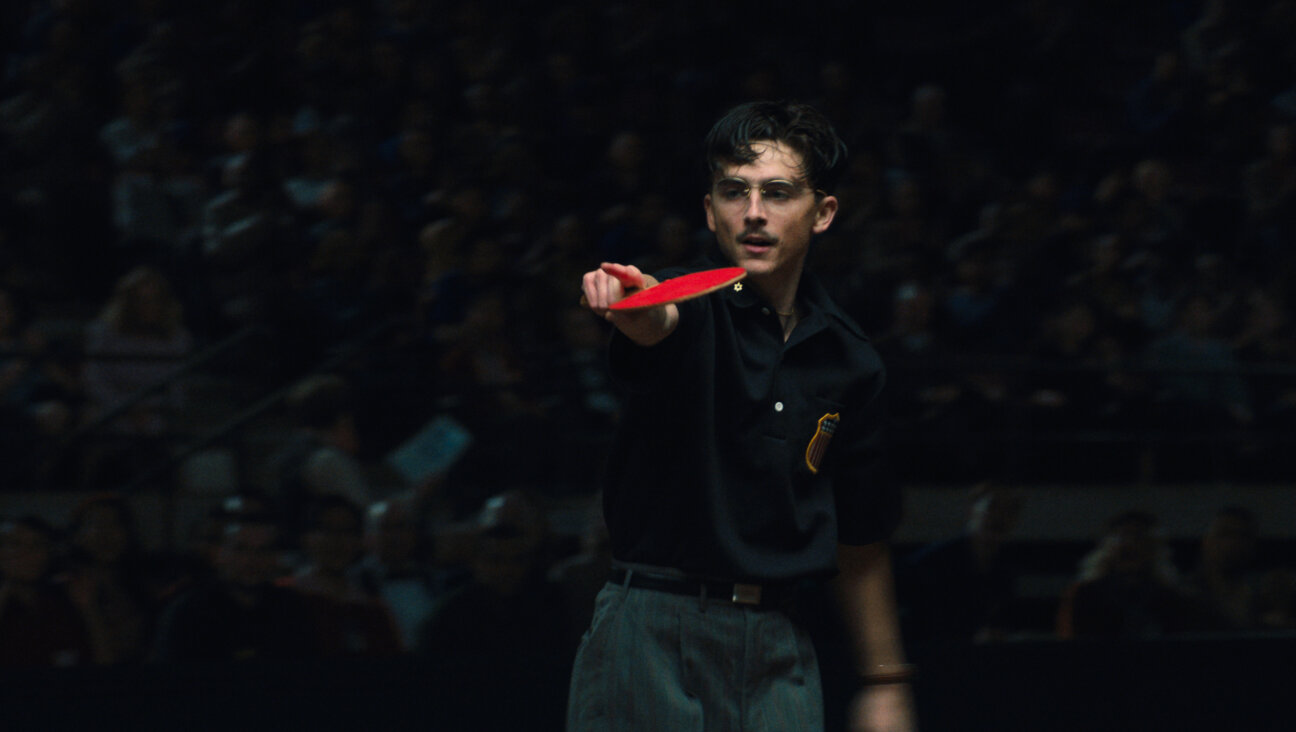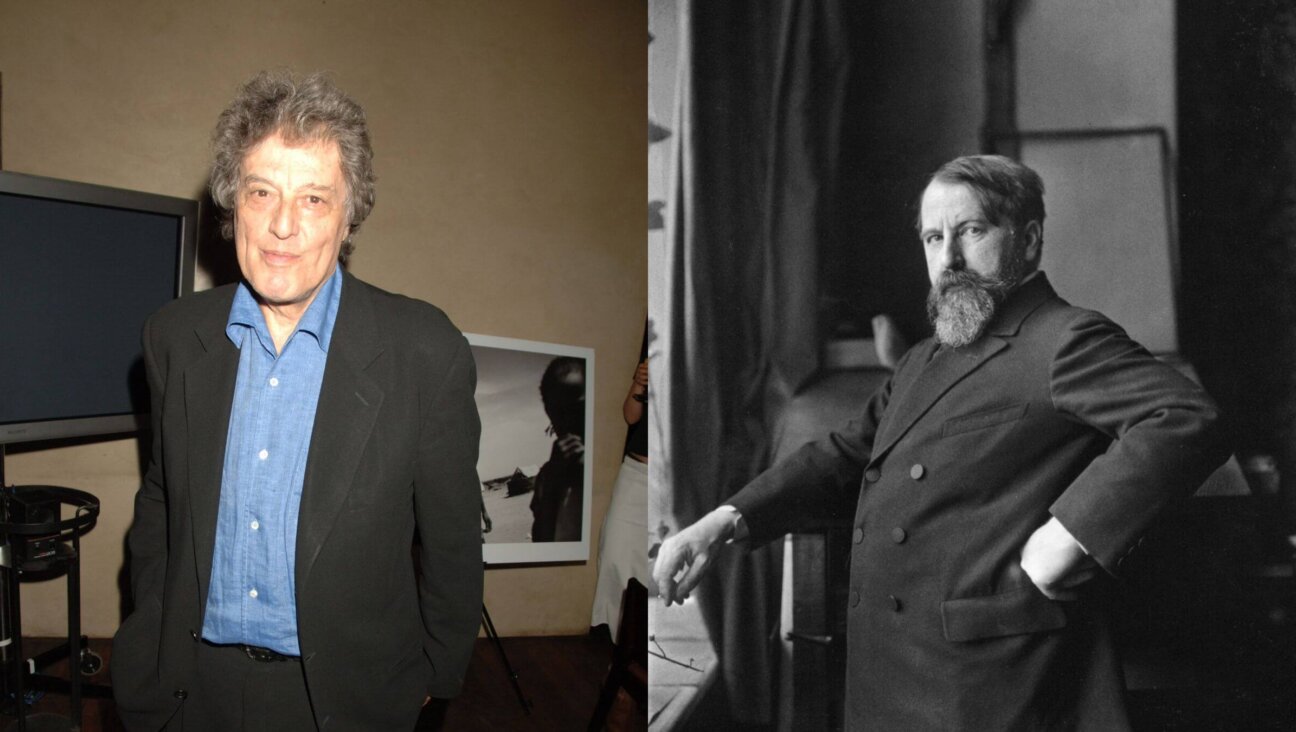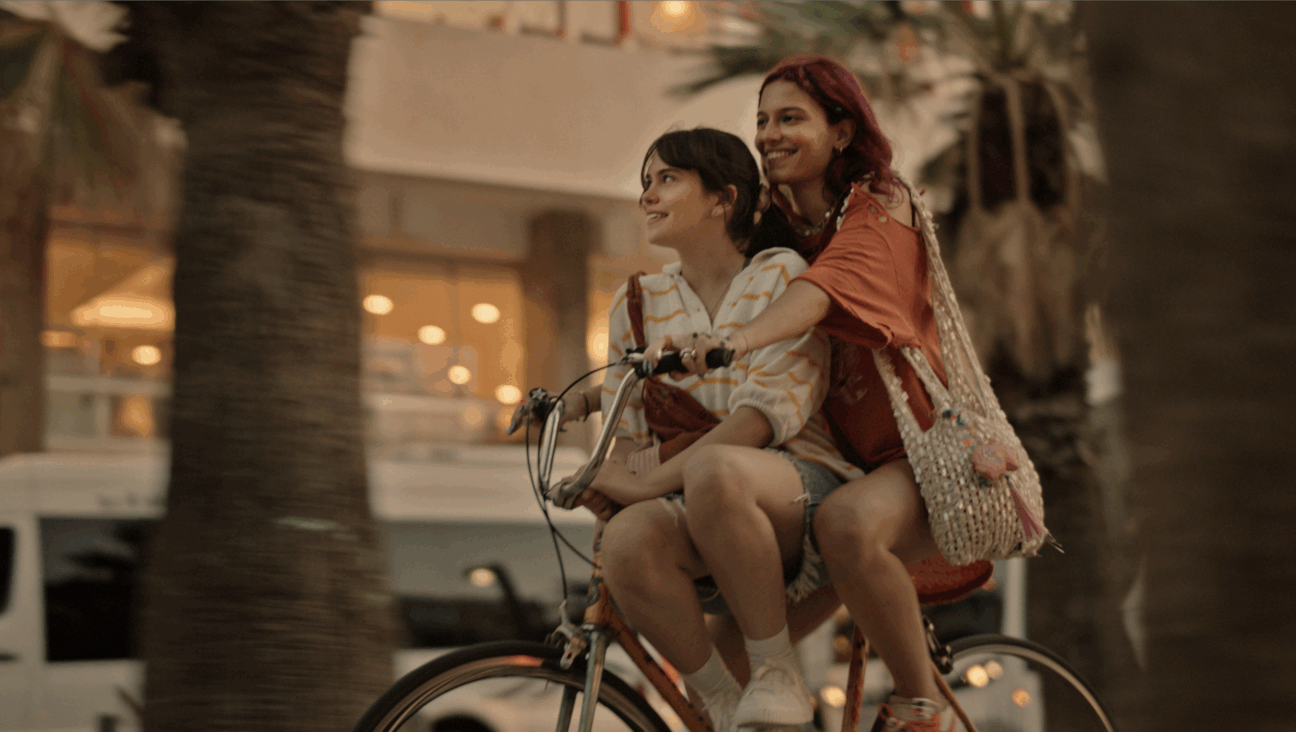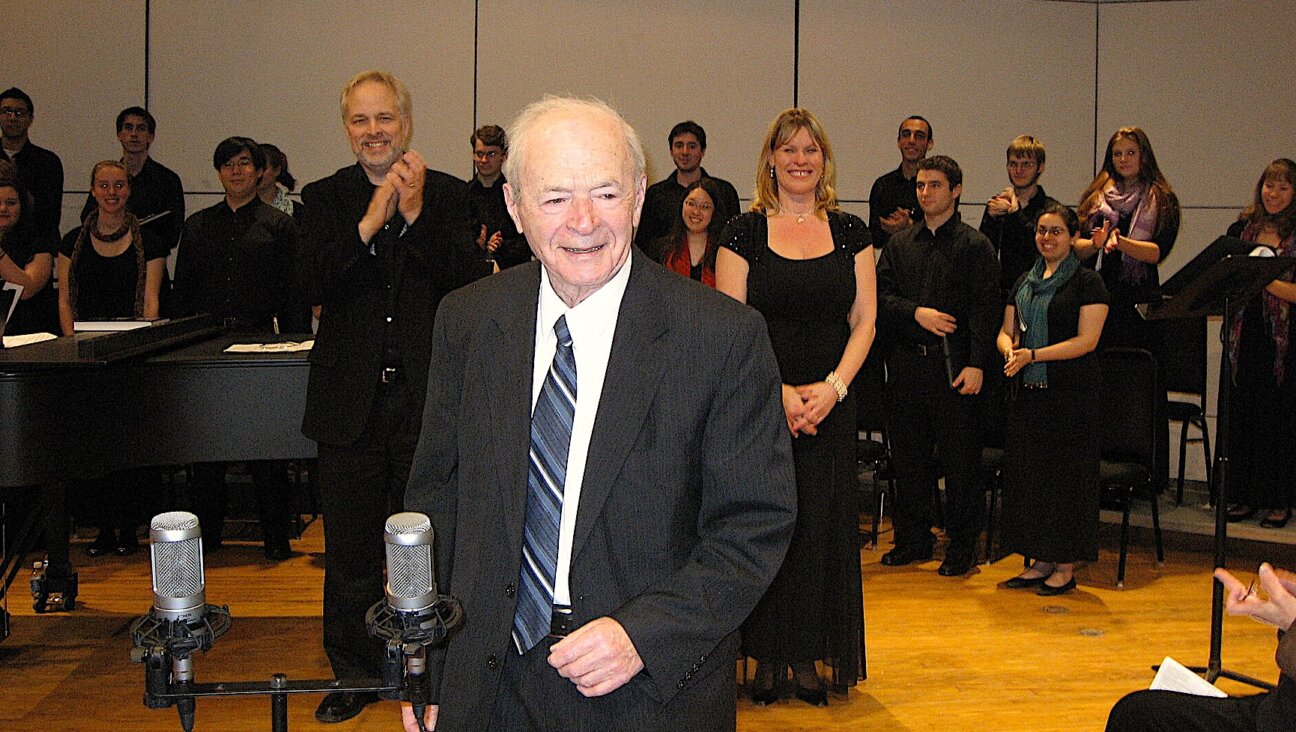Wild at Heart
Maurice Sendak, the focus of a retrospective running at The Jewish Museum in New York until August 14, is the poet laureate of ambivalence. In a career of more than 50 years spent writing and illustrating children’s books, he has largely managed to avoid the sentimentalizing idealization that ruins so much of our thinking about kids. His heroes frequently are tough, resilient and bracingly selfish. When they rely on their imaginations (which they so often do), it is not because the imagination is somehow good for you, as it is in the world of public broadcasting’s purple dinosaur, Barney. Rather, they show that the imagination’s expansive creativity remains our best resource for working through the complexity of dueling emotions and for simply getting us out of jams.
Take “Where the Wild Things Are,” which dominates the first room of the show. Although this book has been a classic since its first publication in 1963, it is not cute. Max, a young boy resplendent in his wolf suit, makes some very destructive mischief around the house. His mother calls him a wild thing and he shows her just how wild he can be. He threatens to eat her up; for this, he is sent to his room without his supper. Instead of feeling contrite, he sails away (in his imagination, of course) to the land of the wild things. Revealing himself, through magic, to be “the most wild thing of all,” Max easily establishes himself as king. But he does not linger in the realm of his omnipotence. Feeling lonely, longing to be “where someone loved him best of all,” and smelling the good food of that less-than-wild world he has left behind, he returns to discover that his mother has brought his dinner right there to his room, after all. A sweet ending, perhaps, but also a tough one. Max never feels guilty for his destructiveness, nor is he meant to. What is more, he is not summoned back to the family circle by his love for his mother, but rather by his longing for her love for him. His vulnerability and his aggression exist side by side. Seasoned by his dreams of absolute power, his imagination is allowed to encompass the whole gamut of his desires without expressing even a whiff of remorse. When “Where the Wild Things Are” first appeared, there was some talk that children would be frightened by it. They were not. But it is easy to imagine that the book, which refuses to be edifying, would scare parents.
At their best, Sendak’s other works also share this rather unflinching reluctance to moralize. The wonderful “In the Night Kitchen,” with its unabashedly naked hero taming the nocturnal bakers (and navigating a brilliant dreamscape of an urban skyline made of bottles, boxes, cooking utensils and cans), is a love letter to the New York, the advertisements and the comics of the 1930s. The equally wonderful “The Sign on Rosie’s Door” is also a love letter to the city — addressed to rowdy kids who are trapped on their block with nothing to do and to Rosie, whose imaginative capacity turns their tedium into expectation and delight. In a completely different register, in “Outside Over There,” a rather dark fable obviously influenced by Sendak’s work on the stories of the Brothers Grimm, young Ida is forced to take care of her baby sister when her father goes away to sea and her mother falls into what appears to be a depressive lethargy. Ida’s inadvertence (or is it her resentment?) provides the opportunity for goblins to steal the baby away, and it is only through Ida’s resourcefulness that she is able to win her sister back again. In each case, Sendak does not teach any lesson beyond his heroes’ refusal to be fazed.
To be fair, the richly rewarding and appropriately kid-friendly exhibition at the Jewish Museum approaches Sendak thematically, not psychologically. The curator, Claudia Nahson, has chosen to organize “Wild Things: The Art of Maurice Sendak” around three topics that are appropriate to the mission of the museum (and are not particularly wild): Sendak’s relationship to the Poland of his Orthodox immigrant parents; his relationship to his own Brooklyn upbringing, and his relationship to German culture and the Holocaust. By presenting Sendak in this way, Nahson has avoided the impossible task of providing an exhaustive account of Sendak’s productivity while doing justice to the range of his achievement as a writer, illustrator, librettist and theatrical designer. The show includes drawings, watercolors, book dummies, models of sets, costumes and videos.
By emphasizing his craftsmanship and his process, the museum setting strengthens, rather than diminishes, Sendak’s illustrations. Most of us first encountered Sendak’s drawings while being read to as children or while reading to our own children. Hurried along by the narrative, it is easy to miss their density of reference, a density that can render them both marvelous and mysterious. In this exhibition, the pages or individual images have been cut loose from their immediate setting. The wall texts direct one to odd details, and force the viewer to slow down and really look at what is going on in each picture. “Wild Things” also reveals Sendak to be a tireless reviser of his work. It is something of a shock to see that “Where the Wild Things Are” originally started as a book about horses.
It is also disconcerting to see that in an earlier version of “Brundibar,” the villain first was drawn not as an adolescent, but as Hitler himself. “Brundibar,” an adaptation by Sendak and Tony Kushner of a prewar Czech children’s opera, is given pride of place in “Wild Things.” The last room in the exhibition is devoted to the book and to Sendak’s sets and costumes for a stage production, and it seems to serve as a kind of punch line to the whole show. “Brundibar” tells the story of two children who journey to town to buy milk for their ailing mother, but alas, they have no money. When they try to sing for change in the market square, they are chased away by the evil organ grinder, Brundibar. With the help of friendly animals and no fewer than 300 fellow schoolchildren, they return. They sing a haunting lullaby, raise the money and bring the needed milk back home. This rather simple story of childhood resilience has become resonant because the opera was performed at the concentration camp of Theresienstadt (now Terezin) by children who subsequently were exterminated. It thus gains a certain degree of heft as an allegory of political resistance. For that reason, one supposes, Kushner added a cautionary note at the end that urges eternal vigilance because metaphorical Brundibars will return.
“Brundibar” is Sendak’s clearest and most direct depiction of the Holocaust, even though he goes to some pains to show that its two young heroes are not, in fact, Jewish. It is not the first time, however, that Sendak confronted the Holocaust. Most tellingly, his beautifully wrought illustrations for “Dear Mili,” a very Christian and ultimately heartbreaking 19th-century tale by Wilhelm Grimm, about a child’s miraculous escape from the depredations of the Thirty Years’ War, refer throughout to children who could not escape destruction — the children deported to the camps during the Second World War. In “Dear Mili,” then, the Holocaust serves as a painful, if subtly constructed counterpoint to Grimm’s wishful fairytale. It works to undermine the German author’s attempt to find redemption at the end.
The illustrations in “Dear Mili” draw on both Renaissance woodcuts and early Romantic German painting. They hark back to the somewhat static, slightly archaic drawings that Sendak produced for the Little Bear books, for the illustrations to Isaac Bashevis Singer’s stories and for the collection of Grimms’ fairytales, “The Juniper Tree.” We could call this Sendak’s “once-upon-a-time style.” “Brundibar,” on the other hand, derives from the more fluid drawings of the 1950s and early 1960s that liven up books like “The Sign on Rosie’s Door.” These emphasize speed and outline, and they replace the illusion of volume and space with washes of color. Thus “Brundibar” looks a lot more chipper than “Dear Mili” and it races along at a truly musical pace. For this reason, you can see why Sendak decided not to overburden his illustrations, for all their references to the war, with the image of Hitler. But it is not clear that a teenage Brundibar can bear the weight of all those allusions to the Holocaust, since he, in the end, is not all that threatening.
Despite its position in The Jewish Museum show, the lightness of touch and its tag-end moral make “Brundibar” look a bit provisional, as if Sendak and Kushner had forgotten “Dear Mili” — its confidence is undone by the reality of the events on which it relies. Put another way, “Brundibar” lacks Sendak’s signature emotional accuracy, that relentless commitment to the complex. Sendak has said that the Holocaust was a blight on his childhood in Brooklyn. This is hardly a pious attitude, but it is an honest and intriguing one. It begs to be turned into a story and to be drawn. And, as this exhibition shows so well, if anybody can do it, it is Maurice Sendak.
David Kaufmann teaches at George Mason University.
















